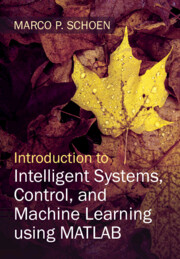495 results
Where does Aedes albopictus (Diptera: Culicidae) really breed in a Mediterranean residential area? Results from a field study in Valencia, Eastern Spain
-
- Journal:
- Bulletin of Entomological Research , First View
- Published online by Cambridge University Press:
- 30 May 2024, pp. 1-10
-
- Article
- Export citation
Successful control of Echinococcosis in Argentina and Chile through a One Health approach, including vaccination of the sheep intermediate host
- Part of
-
- Journal:
- Parasitology , First View
- Published online by Cambridge University Press:
- 03 May 2024, pp. 1-5
-
- Article
-
- You have access
- Open access
- HTML
- Export citation
Chapter 35 - Common Cold
- from Section 3 - Clinical Syndromes
-
- Book:
- Clinical and Diagnostic Virology
- Published online:
- 11 April 2024
- Print publication:
- 18 April 2024, pp 165-167
-
- Chapter
- Export citation
Chapter 44 - Viral Hepatitis
- from Section 3 - Clinical Syndromes
-
- Book:
- Clinical and Diagnostic Virology
- Published online:
- 11 April 2024
- Print publication:
- 18 April 2024, pp 207-211
-
- Chapter
- Export citation
Chapter 56 - Infection Control
- from Section 5 - Patient Management
-
- Book:
- Clinical and Diagnostic Virology
- Published online:
- 11 April 2024
- Print publication:
- 18 April 2024, pp 282-285
-
- Chapter
- Export citation
Chapter 53 - Quality Control and Laboratory Accreditation
- from Section 4 - Laboratory Diagnosis
-
- Book:
- Clinical and Diagnostic Virology
- Published online:
- 11 April 2024
- Print publication:
- 18 April 2024, pp 258-262
-
- Chapter
- Export citation
12 - Off-Grid Systems, Microgrids and Community Energy Systems
-
- Book:
- Renewable Energy Engineering
- Published online:
- 08 March 2024
- Print publication:
- 28 March 2024, pp 419-447
-
- Chapter
- Export citation
Chapter 10 - The Illusion-Motivation Model of Revolution
- from Part IV - Reevaluating Revolutions
-
- Book:
- The Psychology of Revolution
- Published online:
- 07 March 2024
- Print publication:
- 14 March 2024, pp 155-169
-
- Chapter
- Export citation
4 - Re-imagining the Concept of Territory
-
- Book:
- The Rebirth of Territory
- Published online:
- 07 March 2024
- Print publication:
- 14 March 2024, pp 143-189
-
- Chapter
- Export citation
C - Strategist Should Find Advantage
-
- Book:
- Three Faces of Sun Tzu
- Published online:
- 07 March 2024
- Print publication:
- 15 February 2024, pp 171-234
-
- Chapter
- Export citation
10 - Feedback and Control
-
- Book:
- Quantum Measurement
- Published online:
- 10 May 2024
- Print publication:
- 15 February 2024, pp 218-232
-
- Chapter
- Export citation
C - Strategist Should Find Advantage
-
- Book:
- Three Faces of Sun Tzu
- Published online:
- 07 March 2024
- Print publication:
- 15 February 2024, pp 171-234
-
- Chapter
- Export citation
2 - Conceptualising Trust in the Social Rights Context
-
- Book:
- Trust, Courts and Social Rights
- Published online:
- 08 February 2024
- Print publication:
- 15 February 2024, pp 26-57
-
- Chapter
- Export citation
B - Strategist Should Be Cheap
-
- Book:
- Three Faces of Sun Tzu
- Published online:
- 07 March 2024
- Print publication:
- 15 February 2024, pp 110-170
-
- Chapter
- Export citation
B - Strategist Should Be Cheap
-
- Book:
- Three Faces of Sun Tzu
- Published online:
- 07 March 2024
- Print publication:
- 15 February 2024, pp 110-170
-
- Chapter
- Export citation
15 - The Future of Mobile Robotics
- from Part three - Advanced Topics and the Future of Mobile Robotics
-
- Book:
- Computational Principles of Mobile Robotics
- Published online:
- 19 March 2024
- Print publication:
- 08 February 2024, pp 361-364
-
- Chapter
- Export citation
Use of VEGA data to analyse balloon options for possible subsequent long endurance Venus cloud layer missions
-
- Journal:
- The Aeronautical Journal / Volume 128 / Issue 1324 / June 2024
- Published online by Cambridge University Press:
- 08 February 2024, pp. 1104-1118
-
- Article
- Export citation
3 - The Consent Illusion
-
- Book:
- The Privacy Fallacy
- Published online:
- 16 November 2023
- Print publication:
- 30 November 2023, pp 46-66
-
- Chapter
- Export citation

Introduction to Intelligent Systems, Control, and Machine Learning using MATLAB
-
- Published online:
- 27 November 2023
- Print publication:
- 16 November 2023
-
- Textbook
- Export citation



